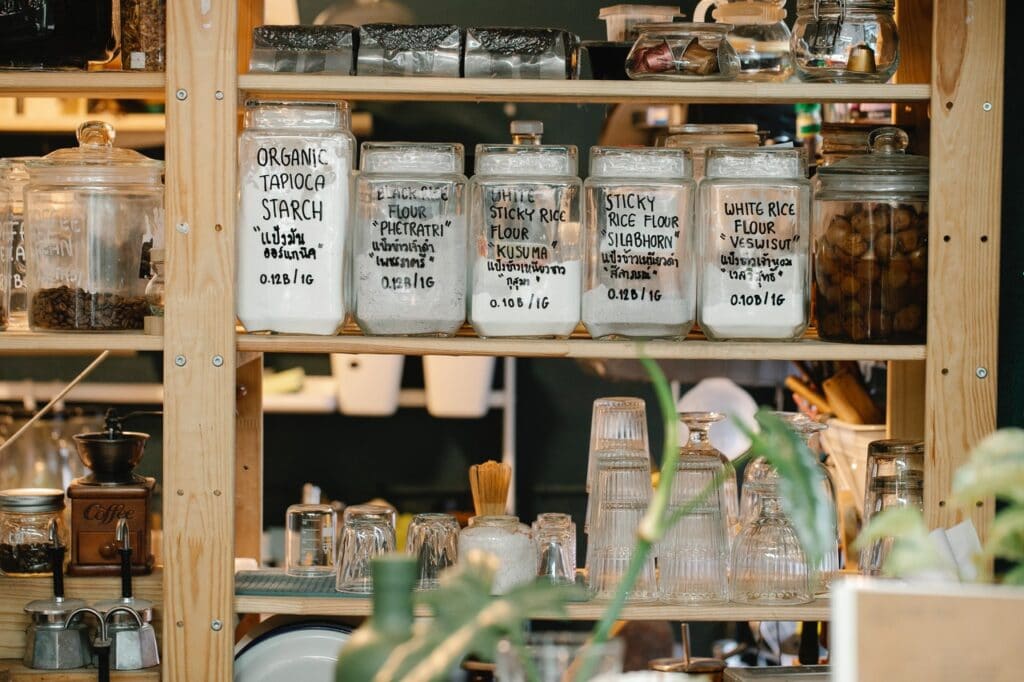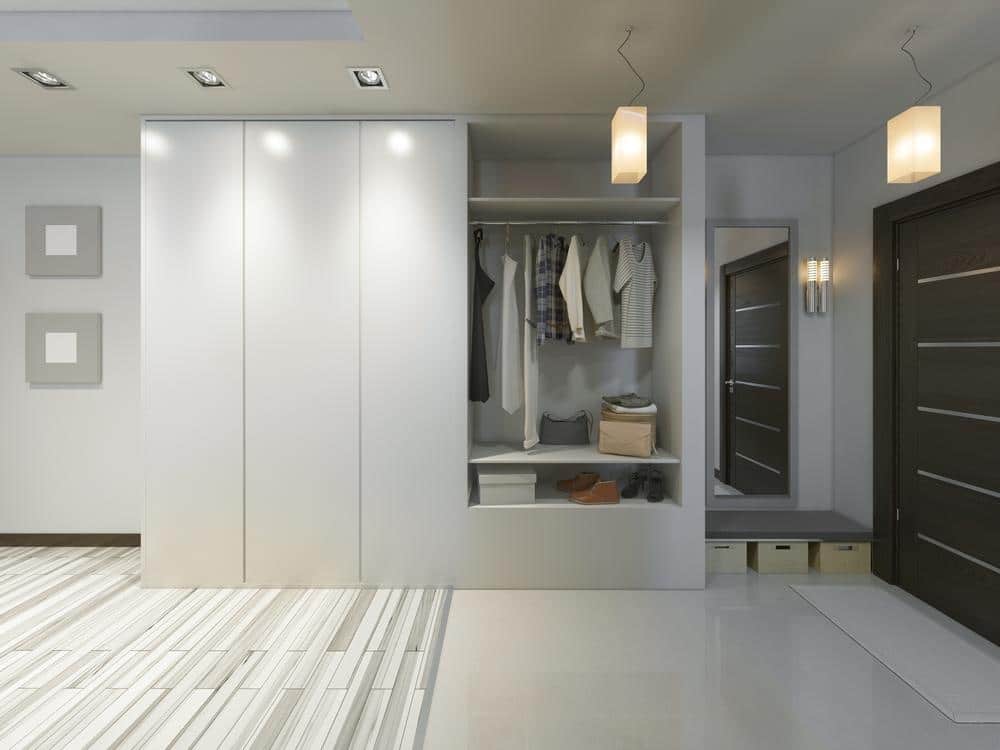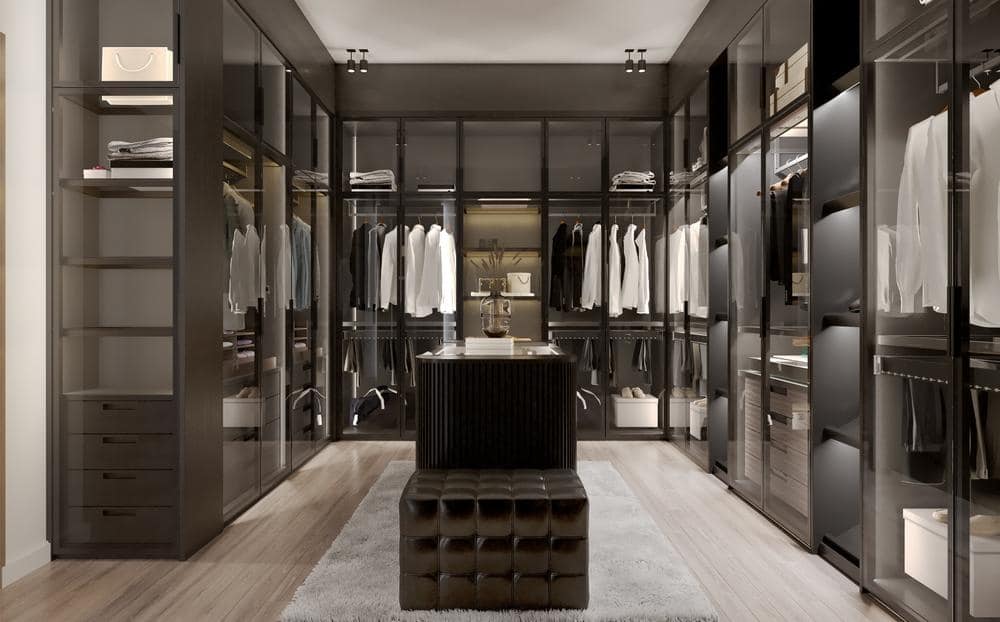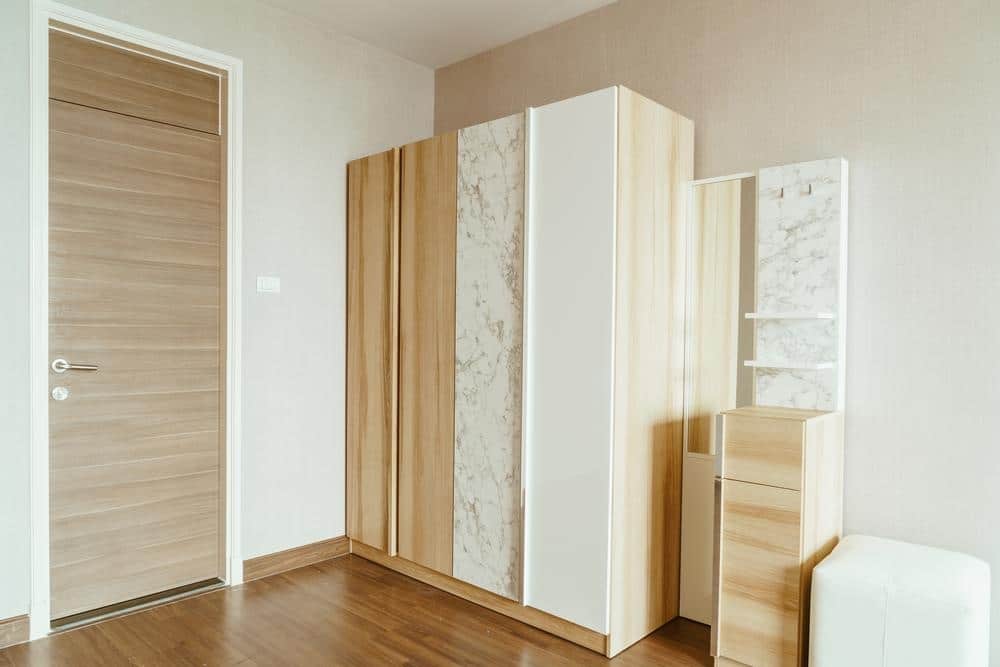Discover a simple solution to the vexing design issue of Kitchen Clutter.
Quick and Easy Fix For Your Kitchen Clutter
Table of Contents
- Quick and Easy Fix For Your Kitchen Clutter
- Easy Fix For Your Kitchen Countertop Clutter
- What is a working pantry?
- Why does my kitchen look cluttered?
- How do you deal with kitchen clutter?
- What is kitchen clutter?
- How do I get rid of clutter in my kitchen?
- What is the rule of 5 decluttering?
- Why is my kitchen so cluttered?
In this day and age of the open plan, live-in kitchen, where the kitchen is exposed to other rooms of the house such as the family room, it is becoming more popular to disguise the ‘kitcheny’ look of the kitchen in favor of the more comfortable look of the adjacent room. We are hiding refrigerators and dishwashers behind decorative cabinet panels and using furniture-like features on the cabinetry to help eliminate the ‘laboratory’ look from the kitchen. Some people are even bringing in ‘unfitted’ furniture to help with the transition between the busiest workroom in the house and its more relaxed neighbor.

However, there is one danger that is always present in a crowded kitchen. Clutter. Most countertops have clutter along the back edge, up against the backsplash. The majority of the time, clutter just sits there, taking up counter space and leaving little space in front for food preparation. In fact, clutter is the primary reason we believe we require so much counter space to prepare a good meal.

Easy Fix For Your Kitchen Countertop Clutter
Countertop clutter may not be offensive or objectionable in a kitchen-only kitchen. It serves a purpose, and we grow accustomed to seeing and encountering it. Clutter, on the other hand, can ruin the appearance of a kitchen that is attempting to blend into another room. Clutter’s chaotic appearance is usually an unintentional assault on the eye, which is usually the same eye that chose the cabinetry, appliances, and countertops to blend so well together in the first place! Clutter, on the other hand, should not be confused with accessorizing, in which everything on display is specifically chosen to create the desired theme. Accessorizing can actually improve the blending process, but it is difficult to keep up with as our lives change. Real countertop clutter, on the other hand, is so diverse that it is obvious that it was completely unplanned.
Clutter can be anything that is left on the counter. Food canisters and condiment containers for salt and pepper, vinegar and oil, and so on are the most common. Clutter can be a basket filled with car keys and notepads, boxes of cereal, an assortment of spices, crockery filled with cooking utensils, or collections of all kinds that display the owner’s personal flea market conquests. The biggest sources of clutter, however, are all of the small appliances that we need to use on a daily basis as well as those that we only use occasionally. Modern appliances can completely ruin the desired effect in period design, where the kitchen design theme tries to emulate a certain historic time period. The ‘appliance garage,’ nestled between the countertop and top cabinets, has addressed this issue with some success, but in many cases it has simply added to the clutter.

A working pantry is simply a small, two-foot-deep (or deeper) countertop hidden behind bi-fold doors. Storage is provided above and below the countertop area in the form of open shelving and/or cabinetry. When the bi-fold doors are open, the countertop can be used to store clutter while also serving as a dedicated workspace.
Working pantries can be built as a closet, full-height and depth cabinetry, or even as freestanding furniture (similar to a bedroom armoire with a countertop in it.) Closets with a plastic laminate countertop and exposed shelving hidden by full-height bi-fold doors are typically the least expensive pantries. Simply by adding a real worktop to a walk-in closet style pantry, it can be transformed from a storage pantry to a working pantry. At the end of a long run of cabinetry, full-height cabinetry with bi-fold cabinet doors above the countertop can be retrofitted into most kitchens. And a freestanding piece of furniture, such as an armoire/working pantry, can truly ease the visual transition from the world of a furnished family room to the world of a utilitarian kitchen. When it is preferable to keep the doors out of the way when the countertop is exposed, pocketing flipper-style doors can be used in place of bi-fold doors in cabinetry or furniture.
However, the main feature of all of these configurations is that the interiors can be kept neat and orderly or completely chaotic, and with the doors closed, nobody knows the difference. Visual order has been restored!

The Working Pantry does an excellent job of concealing clutter while also providing additional work and storage space. However, it can also be used as a dedicated workspace for specific tasks. A baking center, for example, could have a marble top and special storage areas for the mixer, chopper, baking pans, and everything else needed for baking. It can even have built-in flour and sugar bins, just like the old Hoosier cabinets. Another version can be designed as a wet or dry bar, complete with liquor bottle storage, a stemware rack, wine bottle storage, a sink, and even an under-counter refrigerator. A built-in bar/working pantry can even be used as a partition between two rooms, with bi-fold doors on both sides so that the bar can be accessed from either room but closed off when it is not desirable to be seen from either side. Or it can be transformed into a breakfast/snack bar, complete with a coffee maker(s), toaster, and a small microwave, as well as breakfast/snack foods and dishes. The breakfast/snack bar looks especially nice in the breakfast area/transition space between the kitchen and the family room. It becomes a functional alternative to the decorative hutch-style cupboard found in many dining rooms.
More often than not, the simpler the idea, the more likely it is to succeed. A working pantry is one of those straightforward concepts that just makes sense. Though it is not required in every kitchen, it can certainly help to simplify the appearance of most kitchens, especially those that we call “The Heart of the Home,” or those that need to blend with an adjacent room and become more than just a kitchen.
What is a working pantry?
The working pantry is the unsung hero of any home. Not only does it store food, cook meals, and wash dishes – but this room also has an important role in managing your day-to-day life!
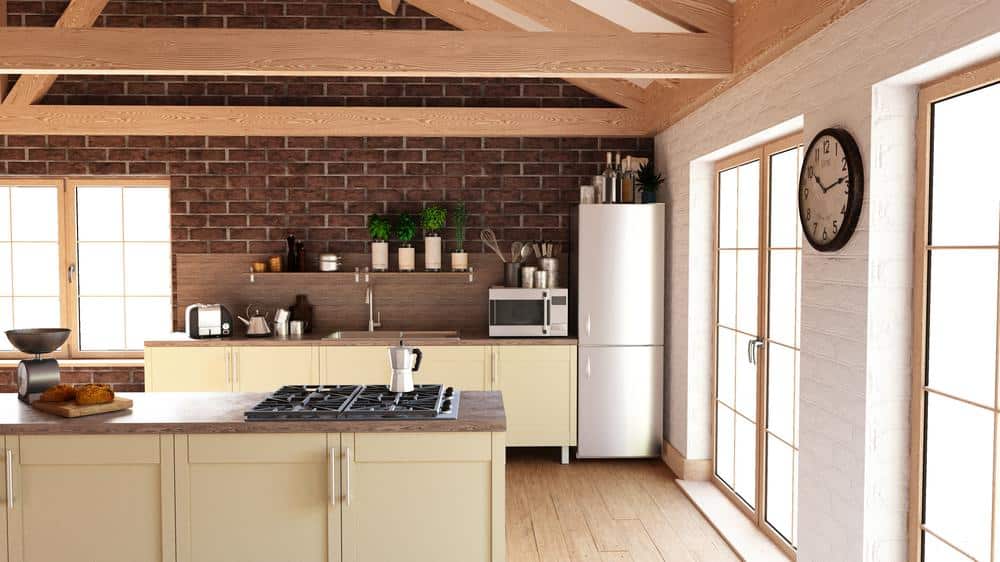
Why does my kitchen look cluttered?
The kitchen is the heart of your home. It’s where you spend most days, so it needs some love! Make sure all important pieces are in clear view with neat shelves and no clutter on counters or windowsills – this will give guests an idea about what they can find when visiting here at night time (or any other day).
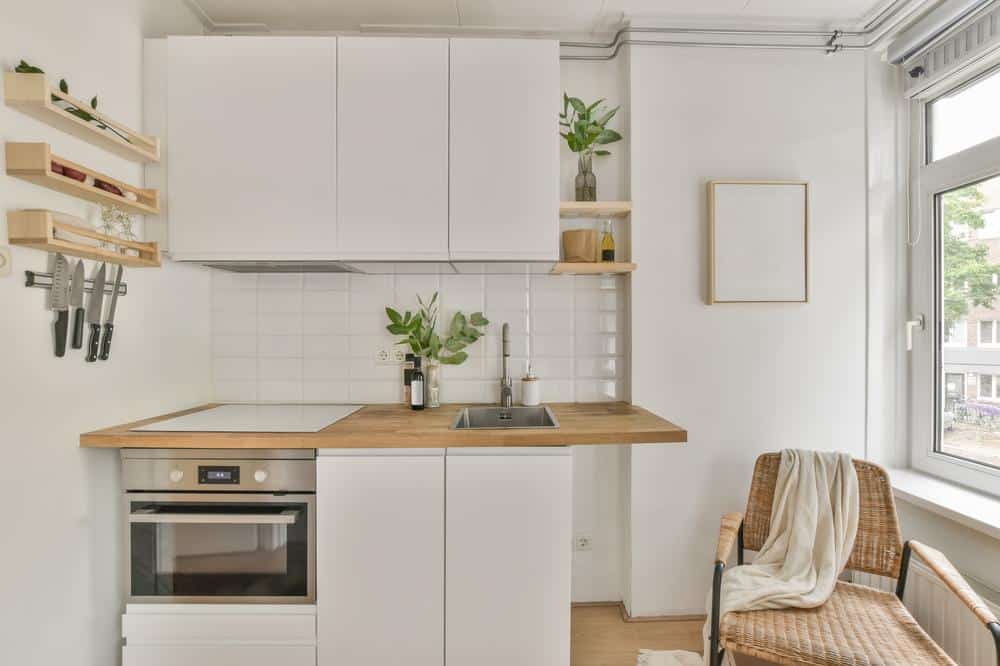
How do you deal with kitchen clutter?
The more organized you are, the less clutter there is in your life.
A clean kitchen can still be cluttered with dirty dishes or laundry left out on tables to dry; but if everything has its place and gets put away after use then it becomes much easier for someone who’s just starting their organizing journey – or even an expert!
What is kitchen clutter?
Kitchen clutter encompasses the disarray and excess items that accumulate in your kitchen, occupying valuable countertop real estate, congesting drawers and cabinets, and hindering a clean and functional culinary space. Kitchen clutter can manifest as unused or redundant utensils, expired pantry goods, seldom-used appliances, or an overabundance of dishes and cookware.
How do I get rid of clutter in my kitchen?
Eliminating kitchen clutter involves a step-by-step process to ensure a well-organized and functional space. Here’s how:
- Assess and categorize: Start by identifying which items are necessary, rarely used, or never used.
- Declutter: Remove and discard or donate items that are unused, broken, or duplicated.
- Rearrange and optimize: Reorganize your remaining items, placing frequently used items within easy reach while storing lesser-used items in accessible but less prominent locations.
- Implement storage solutions: Use drawer dividers, cabinet organizers, and pantry shelves to maximize space and maintain organization.
- Maintain order: Regularly assess your kitchen’s organization and make adjustments as needed to prevent clutter from returning.
What is the rule of 5 decluttering?
The Rule of 5 decluttering is a simple technique for maintaining a clutter-free home by addressing five items per day. Each day, choose five items to either discard, donate, or find a proper place for. This method helps break down overwhelming decluttering tasks into manageable daily actions, leading to a consistently tidy living space.
Why is my kitchen so cluttered?
Kitchens tend to become cluttered for several reasons:
- Excess items: Accumulating too many utensils, appliances, dishes, and food items can lead to overcrowding and disorganization.
- Inefficient storage: A lack of proper storage solutions can result in items being left on countertops or haphazardly placed in cabinets and drawers.
- Inadequate workspace: Small or poorly designed kitchens may not provide enough space for efficient cooking, leading to clutter.
- Emotional attachment: Holding onto items for sentimental reasons can contribute to unnecessary clutter.
- Lack of routine: Failing to establish and maintain regular cleaning and organizing habits can allow clutter to build up over time.

Experienced Executive Assistant with a demonstrated history of working within the furniture industry. Skilled in furniture styling, visual communication, project management, and proficiency with Adobe Creative Suite. Strong arts and design professional with a (BA) Creative Direction for furniture design focused on Industrial Design from School of the Art Institute of Chicago.





